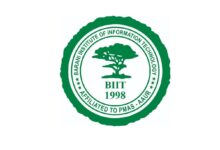Time to lift ban on student unions to transform Pakistan into truly democratic state

Raja Furqan Ahmed
Since Pakistan’s independence in 1947, the Muslim Students Federation (MSF) was formed with the aim of supporting the Muslim League. With the help of MSF, Muslim League successfully achieved its goals and laid the foundation of Pakistan. However, when Muslim League came into power as Pakistan’s first ruling party, things started to dissipate. As a result, MSF is also divided into different groups.
In 1950, the Democratic Student Federation (DSF) was founded by some students. Initially, there was no written constitution or any such law. Since its inception, the organization’s mission was to remove educational problems and fill the gap created by the MSF faction. Almost all colleges and universities in Karachi supported this organization.
This organization also managed to gain prominence in other cities. In 1953, the DSF at Dow Medical College in Karachi developed a Charter of Demand that included fee reduction, library facilities, improved classrooms and the construction of a suitable university in Karachi. A day of protest was also set.
DSF workers came out in a procession to meet the then education minister, Fazel Rahman. The police administration attacked the student workers, killing 6 students. The protest echoed in the House of Power and then Prime Minister Nizamuddin met with a delegation of workers and assured them of implementing the demands.
When Muhammad Ali Bogra gained power, he implemented these demands and laid the foundation of Karachi University. This was a great success for the DSF organization. When the Communist Party was banned in 1954, the Democratic Students Federation also faced this ban because it was accused of supporting the Communist Party.
In that era, new organizations began to emerge. Student organizations, as well as political organizations, began to function. In the 1960s, Jamaat-e-Islami’s student body began to emerge from the sides of politics and became a right-wing force in various colleges and universities. In 1984, the dictator General Zia took a step that has been in force in the country for the last 36 years, just before the student union elections in Karachi, the government announced to ban the student union.
The government attributed the rising incidence of violence. The decision was based on the fact that the anti-government student union has gained strong political power and may be in a position to launch a student movement in the future that could challenge Zia’s dictatorship. Offices of student organizations were sealed nationwide.
Student Organizations seeking to bring new blood. In 2008, former Prime Minister Yousuf Raza Gilani announced the restoration of the Student Union but could not be implemented. On August 23, 2017, the Senate passed a unanimous resolution that could not be passed despite the majority of the PML-N in the National Assembly.
This resolution has also been passed unanimously in Sindh Assembly but could not be implemented. Along with the opposition, the government party is also supporting student organizations. The government should play its role by unbanning the student organization so that students can play a positive role in the political system.




